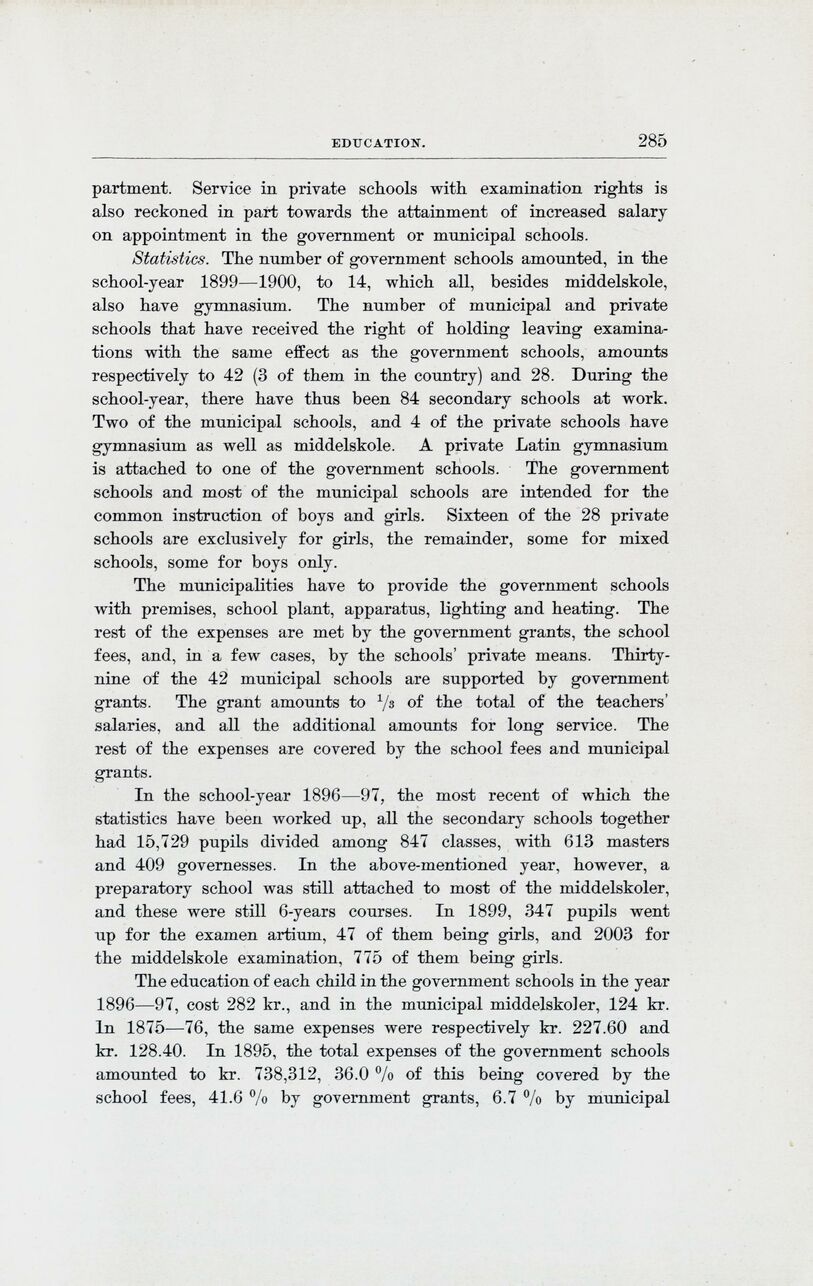
Full resolution (JPEG) - On this page / på denna sida - Education, by J. V. Heiberg

<< prev. page << föreg. sida << >> nästa sida >> next page >>
Below is the raw OCR text
from the above scanned image.
Do you see an error? Proofread the page now!
Här nedan syns maskintolkade texten från faksimilbilden ovan.
Ser du något fel? Korrekturläs sidan nu!
This page has been proofread at least once.
(diff)
(history)
Denna sida har korrekturlästs minst en gång.
(skillnad)
(historik)
Department. Service in private schools with examination rights is
also reckoned in part towards the attainment of increased salary
on appointment in the government or municipal schools.
Statistics. The number of government schools amounted, in the
school-year 1899—1900, to 14, which all, besides middelskole,
also have gymnasium. The number of municipal and private
schools that have received the right of holding leaving
examinations with the same effect as the government schools, amounts
respectively to 42 (3 of them in the country) and 28. During the
school-year, there have thus been 84 secondary schools at work.
Two of the municipal schools, and 4 of the private schools have
gymnasium as well as middelskole. A private Latin gymnasium
is attached to one of the government schools. The government
schools and most of the municipal schools are intended for the
common instruction of boys and girls. Sixteen of the 28 private
schools are exclusively for girls, the remainder, some for mixed
schools, some for boys only.
The municipalities have to provide the government schools
with premises, school plant, apparatus, lighting and heating. The
rest of the expenses are met by the government grants, the school
fees, and, in a few cases, by the schools’ private means.
Thirty-nine of the 42 municipal schools are supported by government
grants. The grant amounts to of the total of the teachers
salaries, and all the additional amounts for long service. The
rest of the expenses are covered by the school fees and municipal
grants.
In the school-year 1896—97, the most recent of which the
statistics have been worked up, all the secondary schools together
had 15,729 pupils divided among 847 classes, with 613 masters
and 409 governesses. In the above-mentioned year, however, a
preparatory school was still attached to most of the middelskoler,
and these were still 6-years courses. In 1899, 347 pupils went
up for the examen artium, 47 of them being girls, and 2003 for
the middelskole examination, 776 of them being girls.
The education of each child in the government schools in the year
1896—97, cost 282 kr., and in the municipal middelskoler, 124 kr.
ln 1875—76, the same expenses were respectively kr. 227.60 and
kr. 128.40. In 1895, the total expenses of the government schools
amounted to kr. 738,312, 36.0 % of this being covered by the
school fees, 41.6 % by government grants, 6.7 % by municipal
<< prev. page << föreg. sida << >> nästa sida >> next page >>